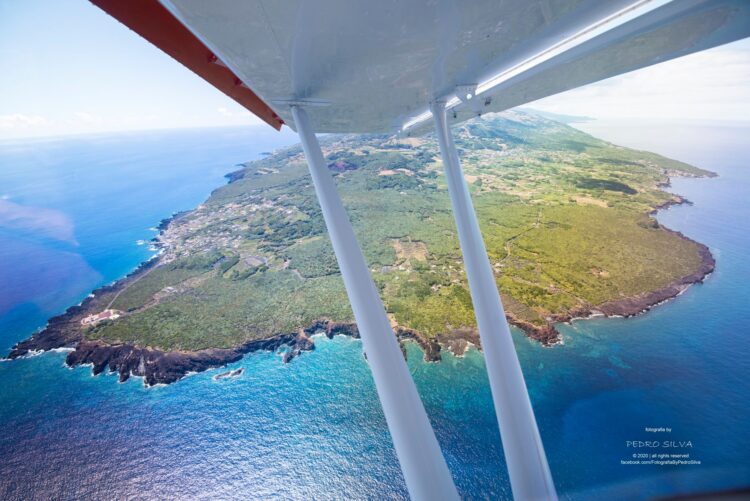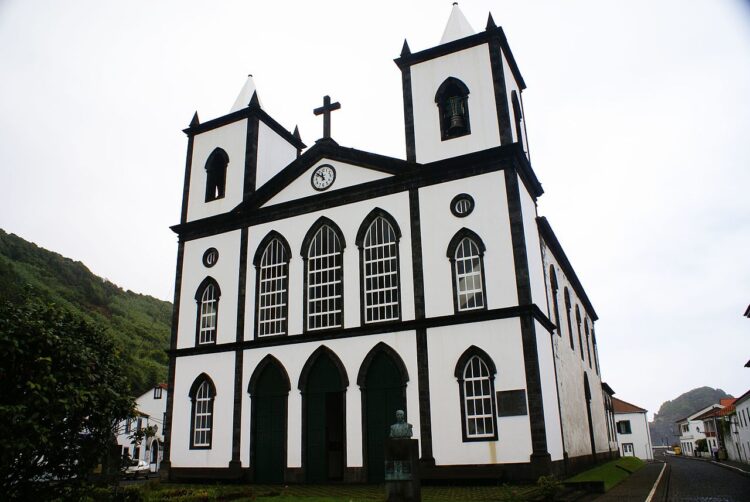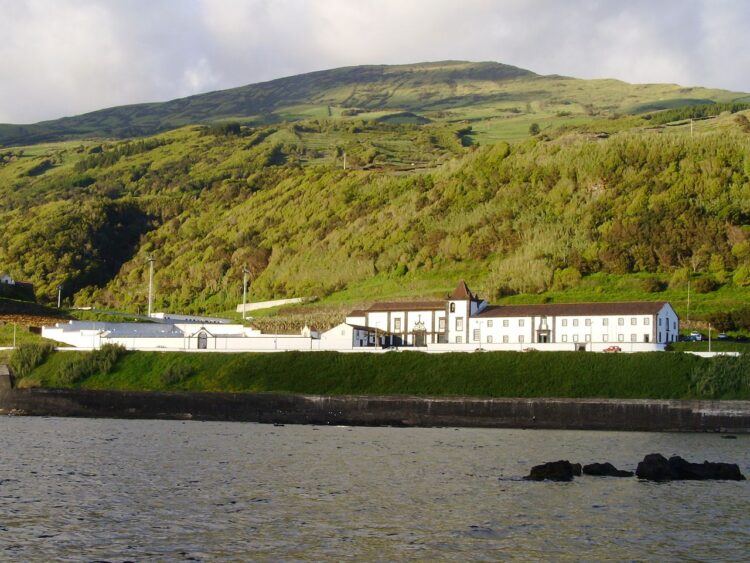Places to Visit in Lajes do Pico – Pico Island
Lajes do Pico is a village and the seat of the municipality located on the southeast coast of Pico Island. This charming village was the first settlement on the island, established shortly before 1460 by the navigator Fernando Álvares Evangelho and his dog (the ruins of his house are still preserved).
Lajes do Pico is well-known for its whaling tradition, and every August, the Whalers’ Week is held, the largest festival in the municipality. The festivities conclude with a procession in honor of Our Lady of Lourdes, the patron saint of whalers.
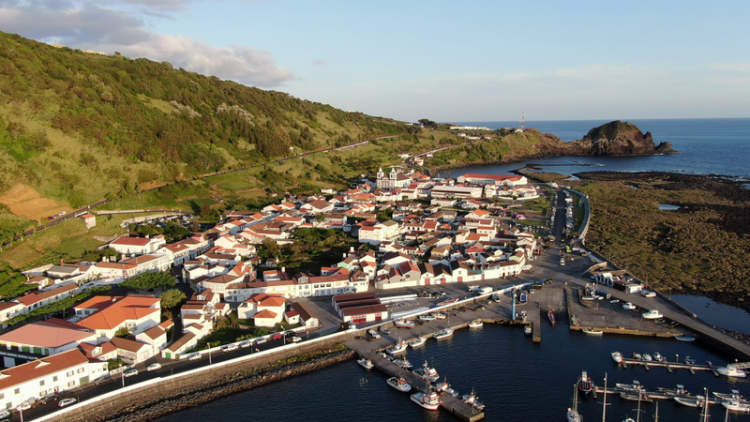
Whale hunting ended in 1984; however, tourism activities, including whale watching, have grown in recent years, offering visitors incredible encounters with nature. The village also hosts the famous Holy Spirit Festivals.
The village takes pride in its monuments, such as the Santa Catarina Fort, now operating as the Tourism Office, the Franciscan Convent, and its Church of Our Lady of Conception, along with other churches, chapels, and hermitages.
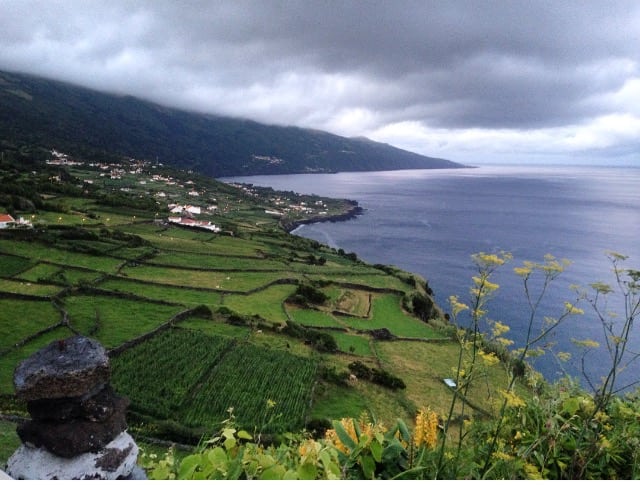
Fotografia de Soraia Nogueira
Bordered by the Atlantic Ocean to the northeast, east, and south, the village offers rich seafood-based cuisine, featuring crustaceans, shellfish, and fish of all sizes. The delicious cheeses pair excellently with verdelho wine and a traditional sweetbread.
Below are some must-visit locations during your stay in Lajes do Pico:
Índice de conteúdos [ocultar]
Ponta da Ilha Lighthouse / Manhenha
The Ponta da Ilha Lighthouse, also known as the Manhenha Lighthouse, stands 19 meters tall with a simple architecture. It is one of the newest lighthouses in the archipelago, built in 1946.
Both the lighthouse and the adjacent building, intended for the lighthouse keepers, are located within Pico Island’s Protected Landscape Area of Regional Interest. Nearby is a rich coastal habitat featuring the Lotus azoricus and the forget-me-not.
Calheta de Nesquim
Calheta de Nesquim is one of the parishes in the municipality of Lajes do Pico and was the first whaling center on the island. Visitors can explore various sites of interest, including the Baroque-style Church of Saint Peter and the beach areas of Poça das Mujas and Feteira de Baixo.
Many of the old whaling boat houses are still open to visitors, showcasing authentic boats and photographs of former whalers. According to legend, the parish got its name from a stormy night when a ship carrying timber from Brazil wrecked on its coast. Only three crew members survived, guided by the barking of a ship’s dog named Nesquim, leading them to a sheltered inlet.
Whalers’ Museum
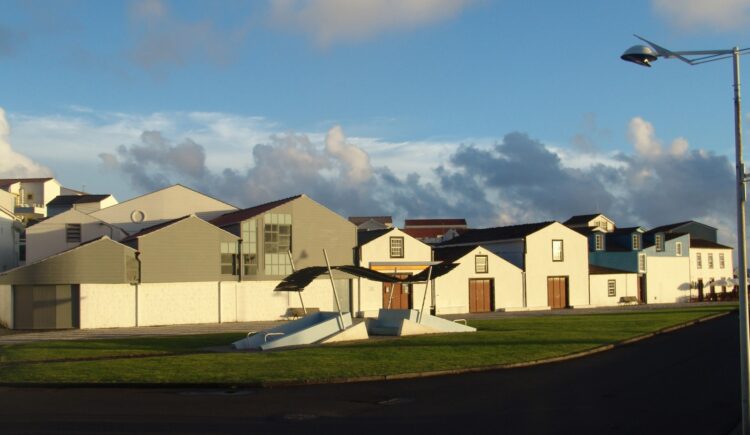
The Whalers’ Museum is the only one in the country specializing in artisanal, seasonal, and coastal whaling, covering an area of about 2,000 square meters across three buildings where whalers once stored their boats.
The museum is housed in 19th-century buildings that retain their original characteristics. The first exhibition was held only in 1979. Today, visitors can see a collection of whaling tools and pieces crafted from sperm whale bone and teeth, known as the famous “scrimshaw.”
The museum also features a library dedicated to whaling and an auditorium where the film “The Last Whalers” is screened. Outside the museum, a re-creation of a direct-fire rendering cauldron used to process whale blubber is on display.
See also: Museums in the Azores
Vigia da Queimada
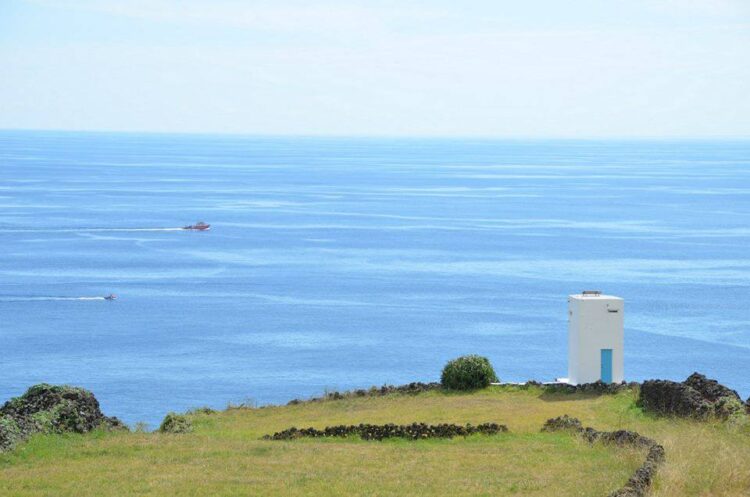
(C) Vigia da Queimada
The Vigia da Queimada was built in 1939 as a whaling lookout used to spot whales and relay their locations to whalers. It was the last lookout decommissioned when whaling was banned in the late 1980s.
Restored in 1991, it is now used for whale watching, directing tour boats via radio. The Vigia da Queimada sits on a high vantage point with a sweeping view of the Atlantic Ocean.
Learn more about it here.
Church of the Holy Trinity
The Church of the Holy Trinity is located at General Francisco Soares de Lacerda Machado Square and its first building dates back to 1503. As the population grew in the 19th century, the need for a larger church arose.
The church has three naves with the main chapel and two side chapels, and its façade is plastered and painted white. Its interior is brightly lit, with a wooden ceiling and a high choir above pointed arches and a triumphal arch.
Franciscan Convent and Church of Our Lady of Conception
The Franciscan Convent, dating back to the 17th century, is attached to the Church of Our Lady of Conception. It currently houses the offices of the City Hall, the Public Security Police, and the Finance department.
According to history, a lady built a chapel named Our Lady of Conception on the site where her father was buried. In 1629, the convent was founded next to the chapel and expanded in the following century.
The convent has two floors, with a prominent bell tower of quadrangular design and three levels. The church has a single nave. The entire site is classified as a Property of Public Interest.
The beautiful and welcoming village of Lajes do Pico offers delicious cuisine, a chance to learn about the whaling tradition, observe marine life, and visit sites filled with history. Its breathtaking landscapes and cultural heritage are truly worth discovering! Enjoy your stay.
Don’t miss also: Places to visit on Pico Island >
 Quick links and suggestions
Quick links and suggestions
Travel insurance with 15% discount for the Azores or another destination Click here to simulate >
Looking for trips to the Azores? See these promotions >
Rent a car in the Azores? The best rent-a-car >
Activities and Experiences during your stay? Check it out here >
See Whales and Dolphins? Book now online >
Have you had a canceled or delayed flight in the last 3 years? Receive your compensation here >


